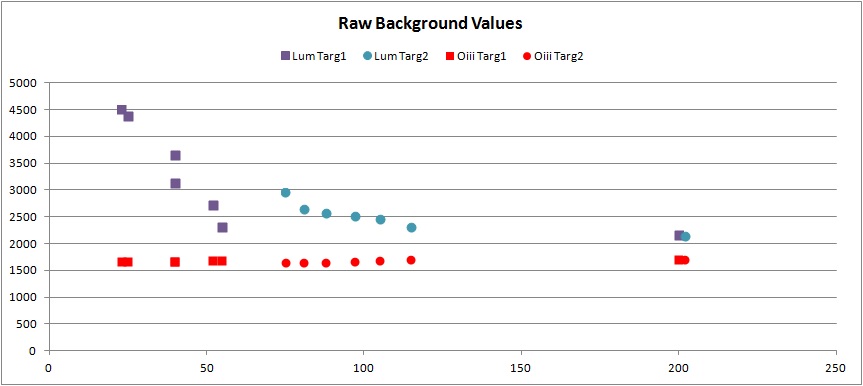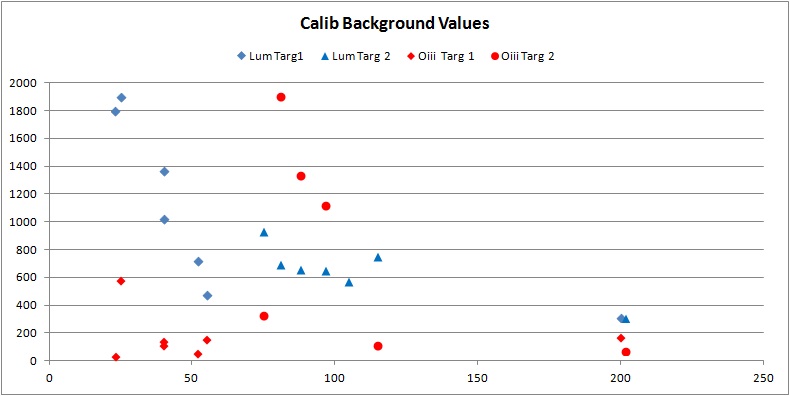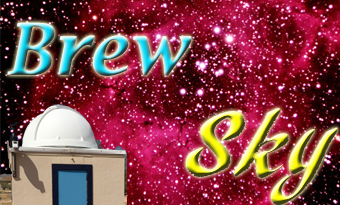I have been wondering about the effect of the full Moon’s light on images. In particular, there is a tempting thought that if your target is far enough from the Moon in the sky, perhaps the Moon’s effect would be negligible. Also, I noticed something in ACP Scheduler that sounded like you might be able to image at angles greater than 120 degrees from the Moon. Since we are having a full moon now, I thought I could try a simple test and see what happens.
I set up an ACP plan to take images every hour through the night. Each hour, ACP would:
a) Focus the Edge 11
b) Take 3 one minute unguided images at a position 60 degrees altitude to the SouthEast using the Luminous (Clear) filter. These images are at some angle from the moon, as given by theSkyX. This target point yielded images at angles of 23 to 55 degrees from the Moon.
c) Take 3 more one minute unguided images using the OIII filter
d) Take 3 more images at a second target position to the NorthWest, again at 60 degrees altitude. The second position was simply to give me points at a greater angle from the moon; I got angles of 75 to 115 degrees from the moon. This target is in the Phoenix light dome so I expect to get higher counts.
e) Take 3 more images with the OIII filter.
f) ACP then sleeps until the next hour is up, at which point the steps above are repeated.
Since my images are at a set Altitude/Azimuth, the images produced are different for every hour. The contents of the images are irrelevant – all I am interested in is the background count.
The Moon rose at 10:43 at 85% illumination. The first set of images were taken at 10:00 PM while the Moon was till down, so that should give a “zero point” for comparison. At this time the Moon was 9 degrees below the horizon.
I used CCDInspector to retrieve the background and contrast for each image, then averaged these values for the three images at each point/filter. Some of the OIII images did not report a contrast, presumably because there were no stars really visible in the image.
Results
Raw Images

The graph shows the effect of the Moon’s angle on the background counts of the raw Luminous and OIII images.
In the Luminous images there is a clear trend toward less background as the angle from the moon is increased. The values at 200 degrees are those produced when the Moon had not yet risen. It seems clear that the Moon’s effect is in fact negligible once the angle gets to 120 or so. Logistically it may be difficult to this large an angle between the Moon and target. Perhaps some Northern targets could be imaged when the Moon is to the South.
I am surprised at the OIII results. It appears that the OIII background does not depend on the Moon’s angle. Even when the moon is not yet up the background is the same. However, I have previously determined that the Moon scatters a significant amount of OIII light when it is up. Perhaps the Moon was close enough to the horizon to scatter a lot of OIII? I do not understand this result.
Calibrated Images

Calibration is performed by Maxim using Bias, Dark, and Flat frames. I had anticipated that the calibrated results would follow the same pattern as the Raw data. As seen in the graph, this is roughly true for the Luminous images. The points in the Phoenix light dome (blue triangles) have higher values, but they are dropping toward the zero point. 120 degrees may not be sufficient to approach the no-Moon case.
However, the OIII results are all over the map. Most of them are at a constant level, but some of the points have very large backgrounds after calibration. Again, I do not understand this variability.
Contrast Results
It turns out that the contrast measured by CCDInspector depends on the contents of the image. If there are a lot of stars or structure the contrast will be higher. This is fine when comparing images of the same target; a higher contrast in this case indicates a better image. However, in this data the contrast readings are random since the image field is different at each point (I am keeping the image at 60 deg Altitude and a fixed Azimuth).
Conclusion
It is not worth it. When the Moon is up, there is still significant light in the calibrated images out to angles of 150 degrees. It may be possible to do something with narrowband filters, but the data there is confusing.
Stay with imaging when the Moon is down.
